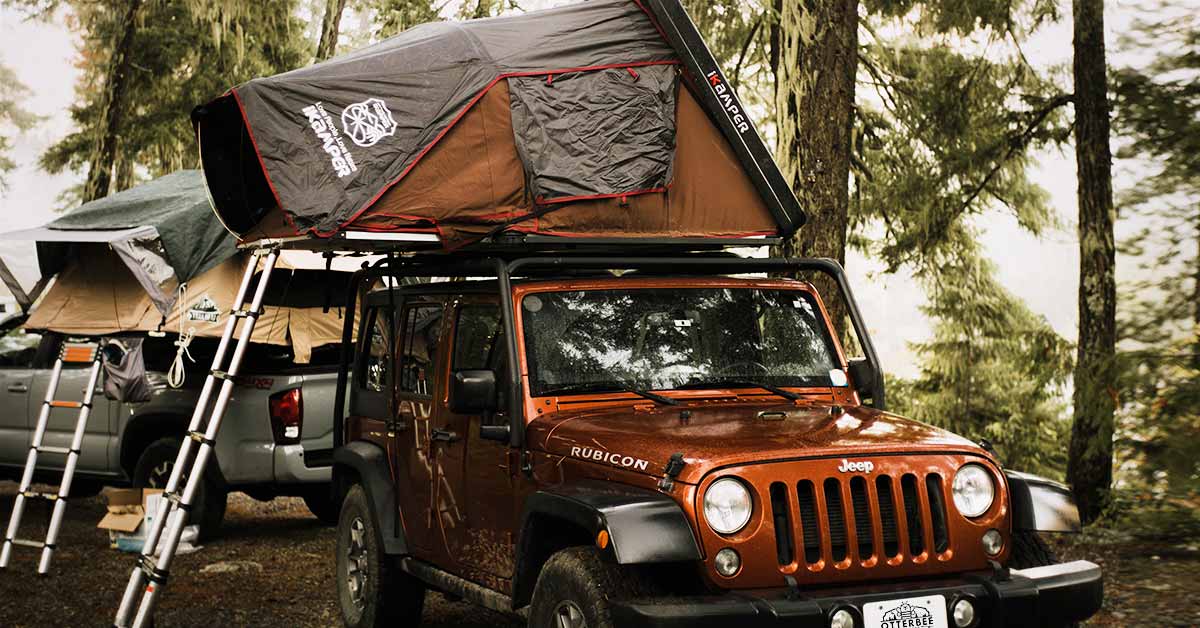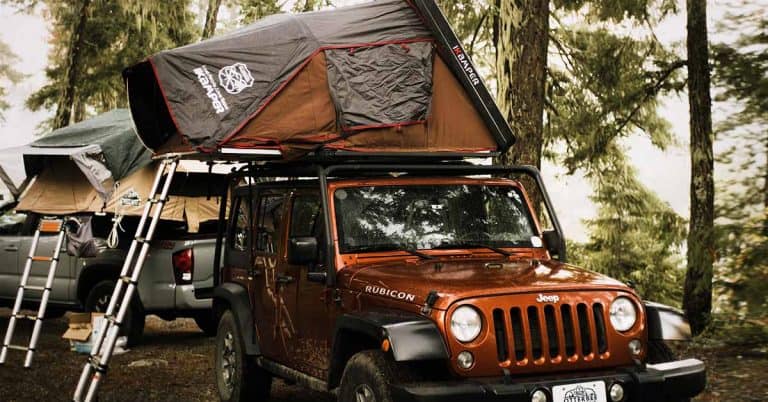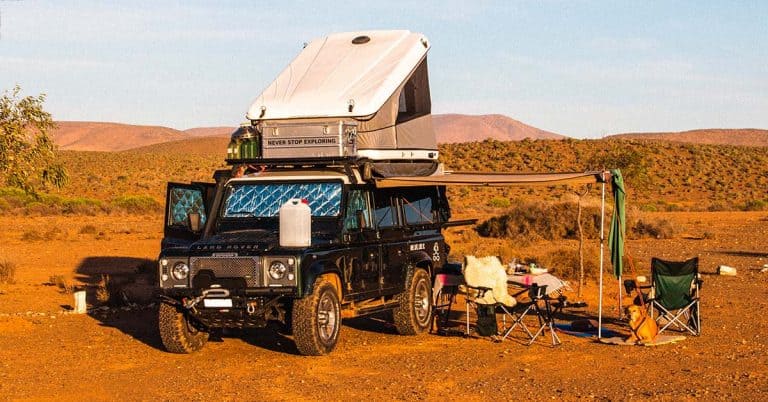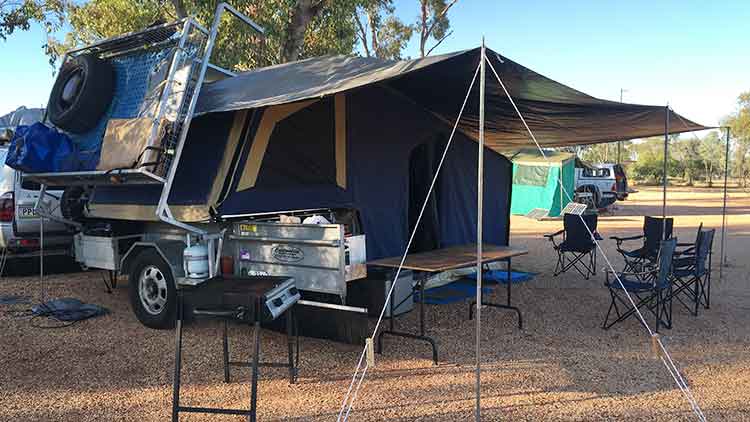Disclosure: I am compensated for purchases made through some links on this site. Click for details.
I don’t care where I’m sleeping. I don’t like sleeping on a slant. It’s an uncomfortable feeling when gravity’s pulling you to the low end of the tent all night or when your head is lower than your feet.
Sleeping in an unlevel roof top tent does not provide restful sleep and could potentially affect the stability and safety of your ladder.
When leveling your roof top tent, start by parking on the flattest surface you can find. From this starting point, use a combination of a leveling tool to measure your pitch and roll and leveling blocks, recovery boards, air suspension, scrap lumber, rock, log, or firewood to level your vehicle.
I’d rather spend a few minutes leveling my tent than sleep at a poor angle all night. It’s far more comfortable. I’m there to have fun, not fight an incline all night.
Let’s look at some of the tips I’ve picked up from others on how to level a roof top tent.
If this article doesn’t answer all your roof top tent questions. Check out the roof top tent questions and answers page.
Related Content:
Picking Your Camping Spot

Roof top tent leveling begins with choosing the flattest possible camping spot. It will be much simpler to level your tent when you start on fairly even ground. Also, positioning your rig on a slope makes for more work and increases possible dangers.
After picking your camping spot make sure to position your tent so that the ladder makes solid contact with the ground. Parking on an incline can make for an unsteady ladder.
It’s typically best to position your tent so that your ladder can be on the uphill side of the tent. If your tent allows you to mount your ladder on either side or back like Roofnest and other hard shell roof top tents you have more options.
If your ladder is on the downhill side, it might not be long enough and poses a greater threat if you happen to slip off when climbing up or down.
Measuring Tools for Leveling Your Roof Top Tent
Some people eyeball it but that’s not very accurate is it? Our eyes can play tricks on us. Here are a few level measuring tools you can use to check if your roof top tent is level.
TIP: If you have not previously confirmed that your roof top tent pad is sitting level on your vehicle, options three and four will not be entirely accurate when measured from within your vehicle.
Tent Levels:
- A T-level is an inexpensive tool for getting your roof top tent level. When you find a spot you think is flat, you can easily check the bubbles in the T-level and make the appropriate adjustments.
- If you like gadgets, you might prefer a digital electronic level and angle gauge over T-levels. They will both get the job done.
- A leveling app on your smartphone can be used.
- If you have a digital dual-axis inclinometer for checking pitch and roll, the process can be somewhat effortless. Maybe there is one on your GPS?
Tools for Leveling Your Roof Top Tent
Were tent levels measure whether your tent is level, a tent leveler is a tool used to level your vehicle so in-turn your tent is level.
- RV leveling blocks can be used to level your roof top tent. They work like Legos. Just build a pyramid out of the 8-1/2″L x 8-1/2″W blocks and drive your vehicle or overlanding trailer onto them.
- Instead of leveling blocks, 2″x6″ board scraps about 10” long can be used. Boards, however, don’t have the same traction.
- Though designed to be used as a vehicle recovery and extraction device, Recovery boards offer a simple yet effective solution for leveling your vehicle or overlanding trailer to which your roof top tent is mounted. Recovery boards are super handy to have if you’re getting off-road anyway.
- If you have self-leveling or adjustable air suspension, you can easily fine-tune the leveling of your roof top tent.
- Camping in sandy conditions can make leveling easy. Just use a camp shovel to bring the high side down.
- A readily available rock, log, or some firewood can often be used to level your roof top tent.
What I don’t like for leveling but some do…
- Scissor jacks
- Floor jacks
- Independent airbags
After Leveling Your Roof Top Tent
- Chock your wheels for safety, you don’t want your rig to roll or shift.
- Double-check the stability of your ladder. If either side of the ladder fails to make firm contact with the ground, use your camp shovel or another leveling tool above to secure your ladder’s footing.
Conclusion
If you don’t level your roof top tent, you may not sleep as comfy. It’s always best to level your rig when you can.
If you can’t get your tent level, it’s better to sleep with your head on the high side and spend the night scootching back up after sliding to the foot of the tent. If your head is on the low side, the blood will rush to your head.
But if the worst part of your trip is sleeping on a little slant, is that really going to ruin your camping trip? Nah. Not for me, it won’t.






